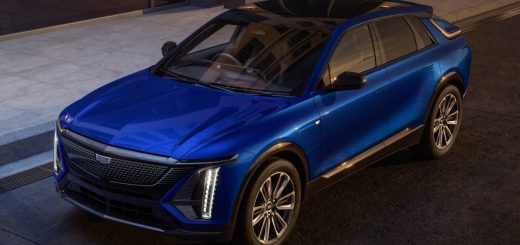In the muscle car world, rebodies are frowned upon by purists because it basically is using the pedigree of one car and placing it onto the chassis of a lesser version − for example, a basketcase big-block Chevelle could have its data plate (and, in rare instances, its VIN) transferred to a primo small-block Chevelle and then sold as a more expensive Super Sport to an unsuspecting buyer. That’s a big no-no, but when it comes to custom-built 1930s cars, there’s a bit more wiggle-room.
This 1931 Cadillac V16 Roadster that will be sold at RM Auction’s Scottsdale event on January 15, 2015 is touted as being “in the style of Fleetwood.” What that means is that this vehicle has an authentic 1931 V16 chassis and engine, but the body is not the one that was born with the car. What happened to the original? Perhaps it was recycled during the war effort a decade later. Perhaps it was a worthless car at some point and converted to a tow truck for a junkyard (yes, that’s happened) . . . whatever the case, the original body is missing. The restorer in this case rebuilt the Cadillac based on existing Fleetwood-bodied cars and drawings. Among the group of collectors into cars from this era, this is considered acceptable but, of course, its value will be affected.
RM Auctions states, “Its bodywork was crafted to exacting original specifications, rather than using a V8 roadster body, as is common for these cars. The V-8 body is very similar to the V16, but it will not mate perfectly with the V16 cowl, resulting in a rather awkward appearance. By carefully building a body from scratch, the result is a wonderful car that is essentially the “106th of the 105″ original Roadsters built by Cadillac from 1930 to 1931.” RM estimates that it will reach $300,000-$375,000 − value affected indeed!















Comments
Cars such as these, if indeed they are to be held up as “just like the originals but for thousands less”, they would need to pass what I call the Concours d’Elegance test.
If such a car can escape the rigorous and thorough scrutiny of Concours d’Elegance judge, then it might be worthy. But, by the admission of the original article, calling it “106 of 105” does more to harm the credibility of the car. If it were original, it wouldn’t need to be fluffed up or have a reworked V8 body dropped on it; it should have been original right from the start.
Well the deal with car of this era are that many were custom bodies. You bought the rolling chassis and has a custom body put on the chassis. In many cases these cars often wore more than on body over their lives. Documentation and just the facts of who did the work and or who had it done can really come into play here as to the value.
Muscle cars are not the same as these custom bodies classics.
Now in this case the body being a modern car will have a slight effect in some aspects if it were not documented to be just as the car originally had at one point. If they can document this is as it originally was many collectors will accept that. Also the quality of the work must be of original nature as in not too poor and not so good that it exceeds the quality of the original craftsmanship.
The truth is most of these show cars have had a lot of their bodies replaced over the years only keeping what could be salvaged. Original bodied cars are out there but not as common as you would like to think with out any restoration. These cars do bring a little more at sale if you can prove the condition.
In the end the type of car, the quality of work and the desire ability of the car all comes into play. As long as the car is not represented incorrectly it should bring a very good price. It may have done better with a fully original body but it no longer has it and we will never know.
In the end the market will determine this car and it will a generous price based on the chassis and engine alone.